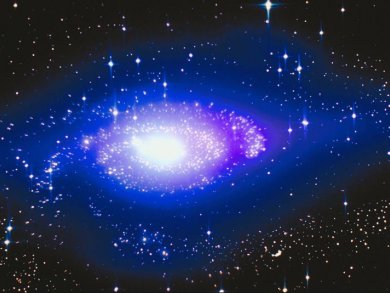The universe consisted of a primordial gas of hydrogen and helium several hundred million years after the Big Bang. From this gas, the first stars formed. According to Stephan Schlemmer, University of Cologne, Germany, the calculations required to answer questions such as how much the gas cooled prior to star formation and how much gas was needed depend upon the rate formation of molecular hydrogen.
The molecular hydrogen serves as an effective coolant at temperatures below 104 K. Collisions of atomic H with molecular H2 transfer kinetic energy through ro-vibrational excited states of the molecule. This can then radiatively relax and the emitted photon may escape from the cloud, thereby cooling the gas. This is considered to be one of the main routes of cooling for the primordial gas.
Molecular hydrogen is predominantly formed in a two-step process from atomic hydrogen by radiative association of an electron and by associative detachment (AD). Calculations of the AD rate coefficient, α(T), using scattering theory, have given a range of reported theoretical values. The recent experimentally determined rate coefficient of AD has reduced the uncertainty in the minimum cloud temperature substantially thanks to comological simulations based on α(T) and gas density.
From the minimum cloud temperature, the mass of the first stars can be inferred. The more accurate AD coefficient is expected to reduce the uncertainty in the mass of a first star by a factor of 10. These stars generated the first heavier elements from fusion reactions in their cores. The type and rate of these reactions is dependent on the mass and temperature of their cores. Therefore, knowing the mass of the first stars is the first step in understanding all that comes after — from predicting the rate of formation of heavier elements, and galaxies, to understanding the conditions under which life evolved — and this in turn depends on the rate of H2 formation.
- H2 Generation in the Early Universe Governs the Formation of the First Stars
S. Schlemmer,
Angew. Chem. Int. Ed. 2011.
DOI: 10.1002/anie.201005920




